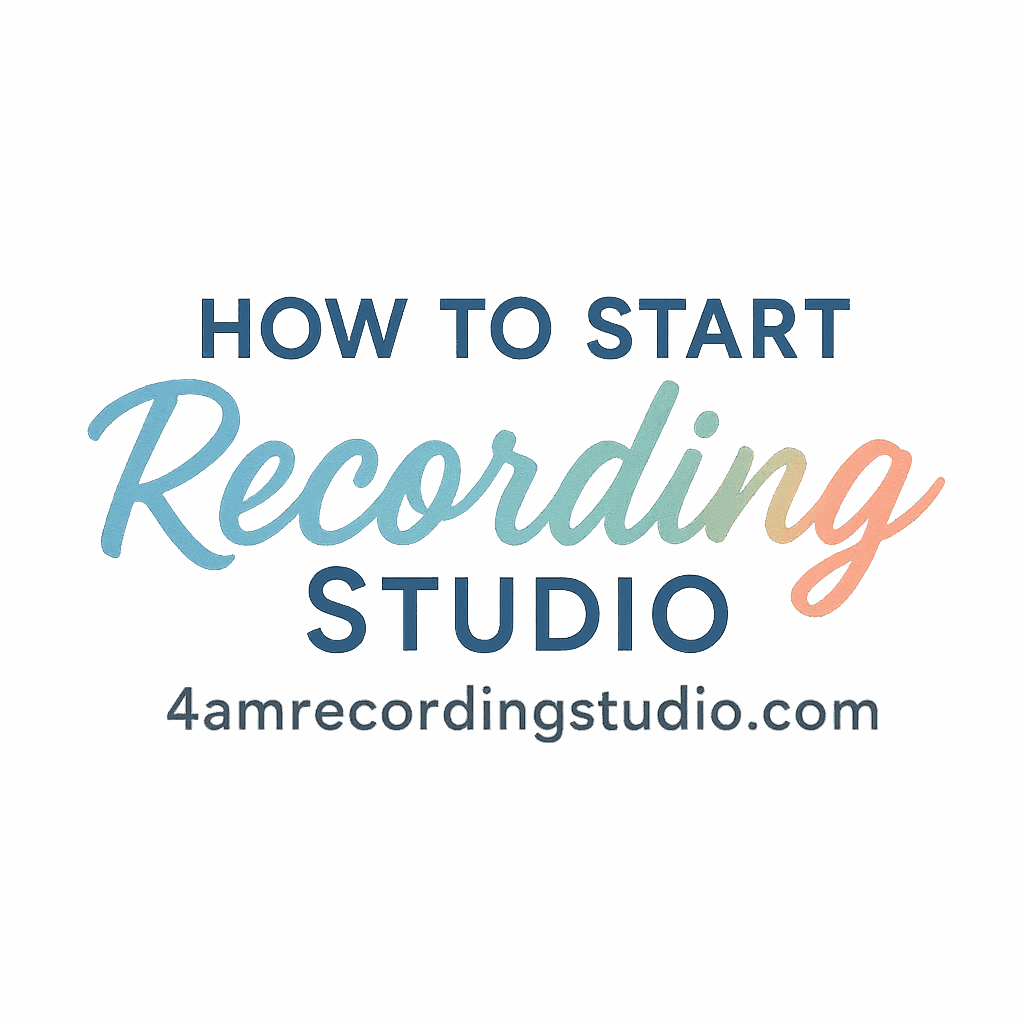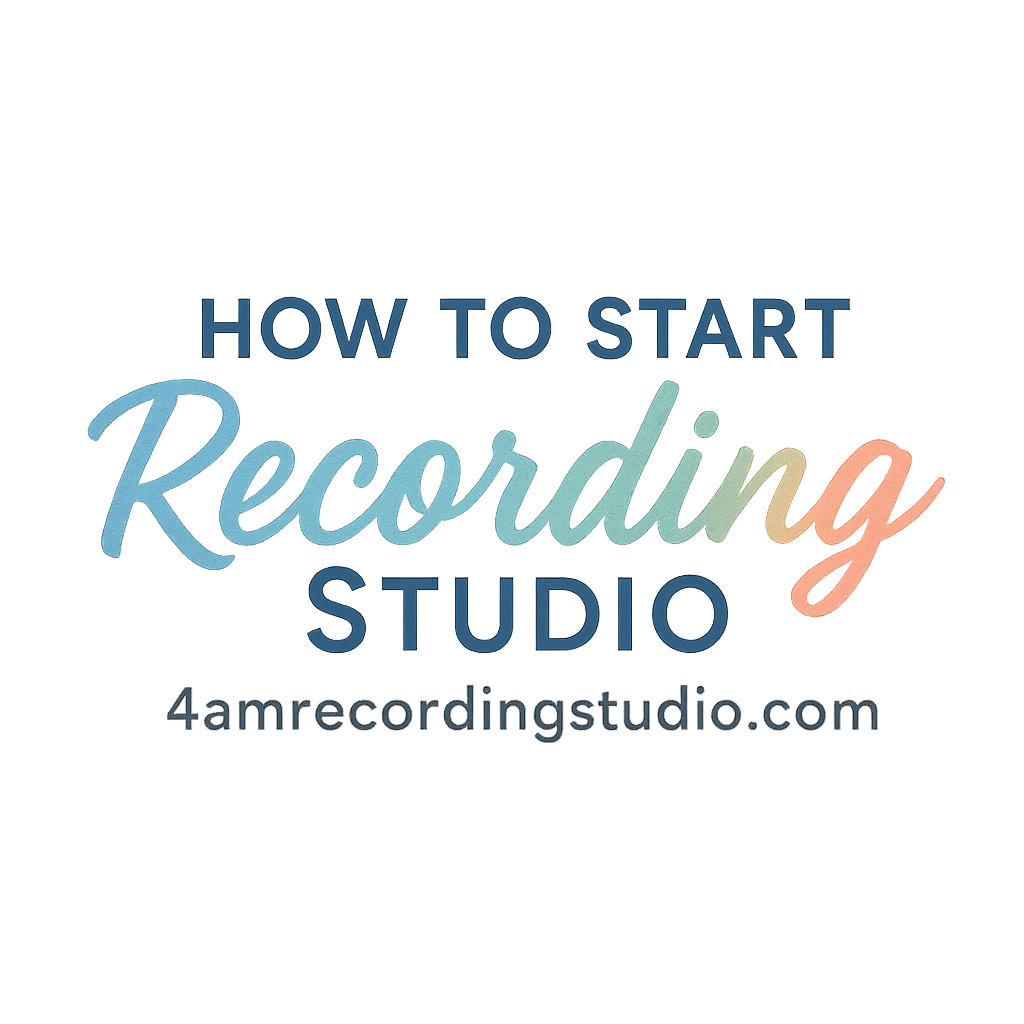Introduction
Thinking of building your dream recording studio? Whether it’s a bedroom setup or a pro-level creative cave, you need the right tools to make audio magic happen. That’s where this guide comes in. We’re diving into the 10 essential pieces of recording studio equipment that no setup should go without. Let’s keep it real, budget-conscious, and beginner-friendly — because quality sound shouldn’t come with confusion.
Why Having the Right Recording Studio Equipment Matters
You can have all the talent in the world, but without the right gear, your sound will suffer. Imagine trying to paint a masterpiece with crayons — not ideal, right? The same goes for music production.
With quality gear, you:
- Capture clean, professional audio.
- Reduce editing headaches.
- Improve client satisfaction.
- Make your workflow 10x more efficient.
So let’s break down the must-have recording studio equipment every serious creator needs.
The Core of Every Studio: Must-Have Gear
Whether you’re setting up in a small space or planning a commercial spot, these 10 pieces of equipment are your studio’s lifeline.
1. Digital Audio Workstation (DAW)
Your DAW is the heart of your studio — it’s where all your recording, editing, and mixing happens.
Popular options:
- Ableton Live: Great for electronic and live performance.
- Logic Pro X: A favorite for Mac users.
- Pro Tools: Industry standard in many pro studios.
Don’t forget to explore the DAW essentials for beginners to help you find your match.
2. Audio Interface
An audio interface connects your microphones and instruments to your computer — converting analog signals to digital so your DAW can process them.
Look for:
- Low latency.
- Multiple inputs and outputs.
- Phantom power for condenser mics.
Explore more on recording studio equipment tools to find top-rated interfaces.
3. Studio Monitors
Forget your Bluetooth speaker — you need honest sound.
Studio monitors are built to provide a flat frequency response, giving you a clear and uncolored representation of your mix.
Popular choices:
- Yamaha HS Series
- KRK Rokit
- JBL 305P MkII
Pair them with monitor isolation pads to reduce vibration and increase clarity.
4. Microphones
Microphones are where the magic starts. Every studio should have at least one good-quality mic.
Condenser vs. Dynamic Mics
- Condenser mics are great for vocals and acoustic instruments.
- Dynamic mics are rugged, perfect for drums and live sounds.
Top picks:
- Audio-Technica AT2020 (budget condenser)
- Shure SM7B (industry workhorse)
Learn more about mic types and their roles in a solid studio setup.

5. Headphones
You need closed-back headphones for tracking and open-back for mixing. Why? Closed-backs prevent sound leakage during recording. Open-backs provide better soundstage when mixing.
Great starter models:
- Audio-Technica ATH-M50x
- Sennheiser HD280 Pro
6. MIDI Controller
If you’re working with virtual instruments or beat-making, a MIDI controller is essential.
- Look for velocity-sensitive keys.
- Choose pads if you’re into hip-hop or EDM.
Check out our MIDI setup guide to maximize your workflow.
7. Cables and Stands
Underestimate these at your peril! A studio full of high-end gear means nothing if your cables crackle or your mic stand collapses mid-recording.
Grab these essentials:
- XLR cables
- TRS cables
- Sturdy mic stands and boom arms
Organizing cables also helps studio management.
8. Acoustic Treatment
No, egg cartons on the wall don’t count.
Real acoustic treatment improves recording quality by reducing reflections and absorbing unwanted frequencies.
What you need:
- Bass traps
- Absorption panels
- Diffusers
For those in small spaces, here are setup ideas that won’t break the bank.
9. Studio Desk & Furniture
Your workflow and posture matter. A studio desk with rack space, keyboard trays, and cable management is a game-changer.
Pro tip: Add ergonomic chairs and monitor stands for long sessions.
10. Power Conditioner and Surge Protection
All this gear is useless if a power surge fries it. A power conditioner protects your setup and can reduce unwanted noise.
Plug your entire rig into one for safety and better performance. It’s a small investment that saves thousands in the long run.
Beyond the Basics: Bonus Gear to Elevate Your Studio
So you’ve nailed the essentials — now what?
External Hard Drives
Backups are your best friend. Use SSD drives for speed and HDDs for large storage.
Monitor Isolation Pads
These prevent desk vibrations from distorting your monitor sound. Small upgrade, huge difference.
Smart Studio Setup Tips for Beginners
- Start small, upgrade smart. Don’t overspend on gear you won’t use yet.
- Room acoustics > gear upgrades. Fix your space before chasing plugins.
- Keep it organized. Use cable ties, label everything, and plan your routing.
Find more at our beginner’s guide to studio setup.
The Financial Side: How to Budget for Studio Equipment
Your dream studio doesn’t have to cost a fortune.
Tips:
- Bundle deals: Buy kits with interfaces, mics, and headphones.
- Used gear: Shop trusted sellers or forums.
- Prioritize: Spend more on mics and interface; upgrade monitors later.
Read our studio business planning guide for full budgeting strategies.
Recording Studio Growth and Management
Once you’re set up, it’s all about scaling.
- Track your income using studio earnings tools.
- Build your network with collaborators and clients from our community tags, collaboration, and clients.
- Market yourself with branding strategies from our marketing section.
You’ll also want to stay on top of studio growth tips to expand your operation like a pro.
Conclusion
There you have it — the 10 essential pieces of equipment every recording studio needs to get rolling. Whether you’re working from a cozy bedroom corner or launching a full-scale operation, your gear determines the quality of your sound and the ease of your process.
Remember: You don’t need to buy everything at once. Start with the basics, build smart, and grow your dream setup piece by piece. Your studio is your instrument — treat it like one.
Looking to take your studio to the next level? Dive into our resources at 4amrecordingstudio.com and make sure you’re set up for success.
FAQs
1. What’s the best microphone for beginners in a home studio?
The Audio-Technica AT2020 is a solid starter choice — clear sound, affordable, and reliable.
2. Can I use regular headphones instead of studio headphones?
You can, but studio headphones offer flatter responses which are better for mixing and accuracy.
3. How important is acoustic treatment in a small studio?
Crucial! Even basic treatment can dramatically improve your sound quality and mixing accuracy.
4. Do I need a MIDI controller if I don’t produce electronic music?
Not necessarily, but it can still speed up your workflow and help with composing or layering.
5. How do I connect everything in my studio together?
Start with your interface. Plug in your mics and instruments to it, connect it to your DAW, and route your monitors and headphones accordingly.
6. What’s the difference between studio monitors and regular speakers?
Studio monitors are designed to give a flat, accurate sound — regular speakers often boost bass or treble to “color” the sound.
7. Where can I learn more about managing and scaling my recording studio?
Check out our guide on recording studio management and growth for step-by-step strategies.


